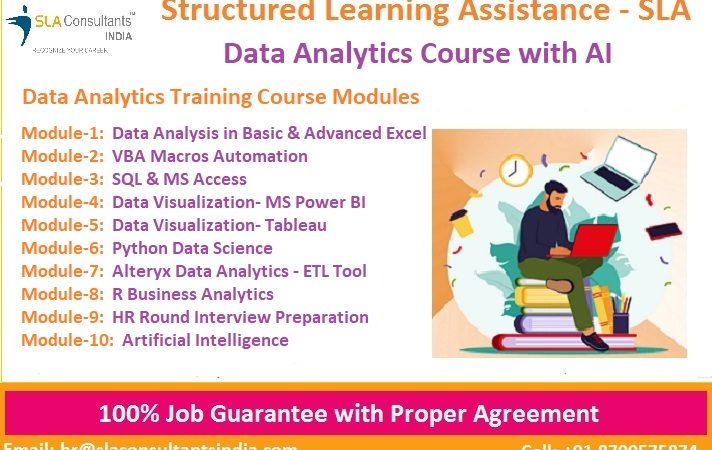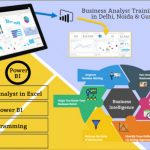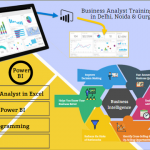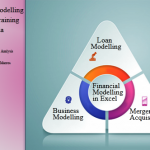The world of data analytics is evolving rapidly, and as we approach 2025, the fusion of Real-Time Analytics, Internet of Things (IoT), and Generative AI promises to reshape industries across the globe. This convergence is pushing the need for advanced, real-time decision-making capabilities while presenting unique challenges and opportunities. For professionals looking to stay ahead in the data analytics field, mastering these evolving technologies will be key to future success.
Real-Time Analytics: The Future of Instant Decision-Making
Real-time analytics refers to the continuous analysis of data as it is generated or received, enabling businesses to make decisions on the spot, often within milliseconds. In sectors like finance, healthcare, logistics, and retail, real-time insights drive innovation and efficiency. As sensor data from devices (IoT) and live information streams are integrated, industries can make quicker, smarter decisions, improving everything from supply chain efficiency to customer satisfaction.
As companies continue to embrace the Internet of Things (IoT), which connects devices to the internet and to each other, the volume of real-time data will increase exponentially. This surge of data requires powerful tools and techniques to analyze, visualize, and interpret the information effectively. In 2025, professionals will need to master platforms that support streaming data analytics, including Apache Kafka, Apache Flink, and Google Cloud Dataflow, to efficiently process vast amounts of live data.
IoT: Connecting the World for Smarter Decisions
The IoT ecosystem is growing rapidly, creating an interconnected world of devices ranging from smart home gadgets to industrial sensors. By 2025, the number of IoT devices is expected to surpass 75 billion globally, generating massive volumes of data. The integration of IoT with data analytics will offer real-time insights into operations, health monitoring, and more. However, managing this deluge of data will require sophisticated tools and skills in data engineering and data science.
Professionals in the field will need to gain expertise in handling Edge Computing, a critical enabler of IoT analytics, where data is processed close to its source rather than in a centralized data center. This reduces latency and improves real-time decision-making, making it essential for roles in industries such as autonomous vehicles, smart cities, and industrial automation.
Generative AI: Augmenting Data Analytics Capabilities
Generative AI, the technology behind creating new data from existing information (such as images, text, or music), is expected to play a pivotal role in the data analytics landscape by 2025. Generative AI models, such as GPT and DALL·E, are already pushing the boundaries of how we understand data generation and transformation. These models can generate insights from complex data, automate decision-making, and even simulate future scenarios based on historical information.
Incorporating Generative AI into analytics workflows will empower organizations to predict trends, optimize resources, and uncover hidden patterns. Data scientists and analysts will need to understand how to train, fine-tune, and deploy generative models in various contexts. This involves skills in machine learning, natural language processing (NLP), and deep learning algorithms. Additionally, combining AI-driven insights with real-time analytics will help organizations create a more dynamic, responsive business environment.
The Future Skillset for Data Analytics Professionals
As we move toward 2025, data analytics professionals must adapt to this rapidly changing landscape by acquiring a combination of technical, analytical, and business skills. Key skills to thrive in this new era include:
1. Real-Time Data Processing: Mastering tools for real-time data streaming and visualization (e.g., Apache Kafka, Flink).
2. IoT Analytics: Understanding how to process, analyze, and secure data from billions of IoT devices.
3. Generative AI & Machine Learning: Building expertise in AI models** to predict, automate, and generate insights.
4. Cloud Computing & Edge Computing: Gaining proficiency in cloud platforms (AWS, Azure, Google Cloud) and distributed edge computing.
5. Data Engineering: Advanced skills in data architecture, ETL processes, and data integration for real-time applications.
Conclusion
By 2025, the intersection of Real-Time Analytics, IoT, and Generative AI will revolutionize data-driven decision-making across industries. For professionals, the key to success will be a blend of technical expertise and a deep understanding of business problems. Investing in these critical skills today will ensure that tomorrow’s data analysts are not only equipped to handle massive datasets but can leverage them to innovate and drive transformation across the global landscape.
SLA Consultants Real-Time Analytics & IoT: Future Data Analytics Skills with Generative AI or 2025, by «SLA Consultants Noida» Details with Free SAP FICO Certification are available at the link below:
https://slaconsultantsnoida.in/courses/best-data-analytics-training-institute/
https://slaconsultantsnoida.in/institute-for-data-analytics-training-course/
Data Analytics Training Course Modules
Module-1 Data Analysis in Basic & Advanced Excel
Module-2 VBA Macros Automation
Module-4 Data Visualization- MS Power BI
Module-5 Data Visualization- Tableau
Module-7 Alteryx Data Analytics – ETL Tool
Module-9 HR Round Interview Preparation
Module-10 Artificial Intelligence
Contact Us:
SLA Consultants Noida
E-48, First Floor,
Sector 3,
Near Sector 16 Metro Station
Noida, Uttar Pradesh, 201301
Call +91- 8700575874
E-Mail: hr@slaconsultantsindia.com
Website: https://slaconsultantsnoida.in/





Necesitas Date de alta o Entrar para poder comentar